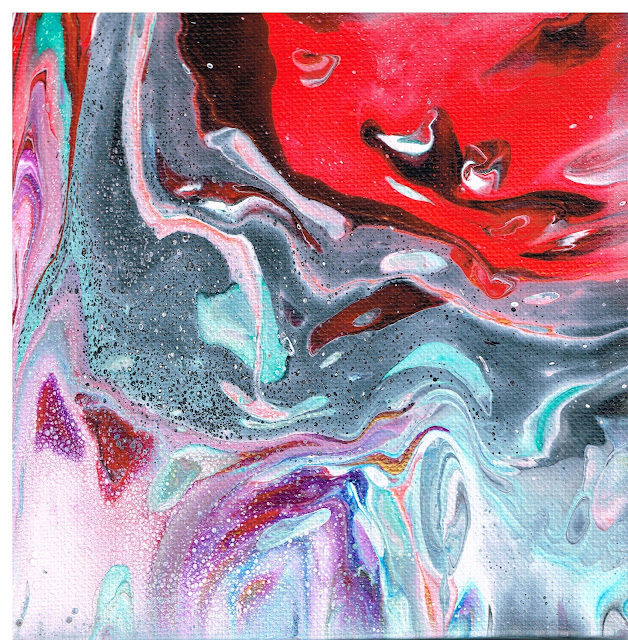On the left I have 3 acrylic paintings in progress. On the right I have my first encaustic painting I've done solo! Mr. Chase was so great to modify my desk to a sit down/stand up desk. Just push a button to stand or sit!
Here are 3 acrylics in progress and at different stages - the one in the middle is almost complete when I add some antiqueing around the edges...
Here is my first encaustic painting! Two koi and a lily pad. It's an 8x8 on a cradled birch panel.
Learnings - Should have just streaked the transparent blue over the fish as the one on the right is too dark - but then, it could be deeper in the water! I am not too happy with the lily pad either - I blew a hole right in the middle of it by being too close with my heat gun!
I love the vibrant colors of the RF encaustic paint - but I won't be able to afford this habit for very long. Everything was supposed to arrive yesterday and when I still had not received my paint, I went online and it had been delayed until next Thursday! NO WAY!
I immediately jumped in the car and in all this "eclipse" traffic headed for Oregon and went to Blick's as it was the only store still open that sells encaustic. I ended up paying an additional $200 just to get the paint last night - but at least I have it for the weekend. Lesson #1 learned.
Lesson #2 - the wax takes longer to heat up than I thought. I thought maybe a half hour would be good - but it actually took almost an hour.
Lesson #3 - try to make layers thinner. I did a good job overall smoothing out any bubbles, etc. but it seems a lot of wax was used.
Lesson #4 - don't forget to tape the edges! I had gotten half of the first layer on when I remembered and thank goodness I didn't have any drips at that point in time.
Lesson #5 - put more on a single layer if you can. I should have combined a few things, like do the rocks on the bottom of the pond and the fish in the same layer. That would have saved me 2 more layers of encaustic.
Overall I think my first attempt was a success! Not perfect - my husband didn't even know what he was looking at. "Flowers?" um, no! "abstract?" another no! I finally had to tell him.
Thanks for stopping by! Hope you enjoy my journey into wax. It is so much fun. Linda Robertson @ lindarobertsonarts.com would be so proud. :-)















































